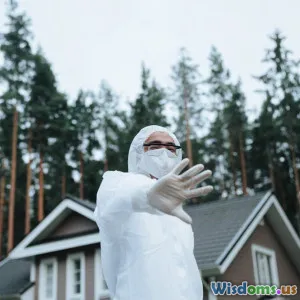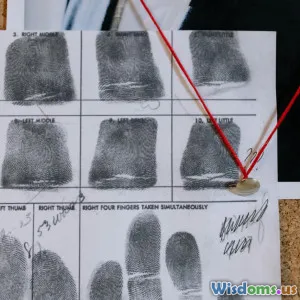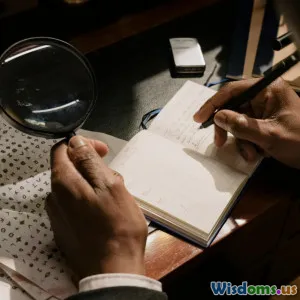
Seven Myths About Forensic Science That TV Shows Get Wrong
8 min read Debunking seven common forensic science myths popularized by TV shows, revealing what the real science tells us. (0 Reviews)
Seven Myths About Forensic Science That TV Shows Get Wrong
Forensic science has a special place in our cultural imagination—thanks largely to popular TV shows such as CSI, Bones, and NCIS. These series blend mystery, science, and drama, captivating millions of viewers weekly. But while they entertain, they often paint an inaccurate picture of forensic science and its real-world practices. From superhuman forensic experts who crack cases in minutes to flawless DNA matches, the truth is often far less glamorous.
In this article, we'll dive deep into seven common forensic myths perpetuated by television, revealing what the science actually says. Understanding these misunderstandings is crucial—not just for appreciating forensic science accurately but also for those interested in criminal justice reform, science communication, or careers in the field.
Myth 1: Forensic Analysis Solves Crimes in Under an Hour
Many crime dramas feature forensic scientists processing evidence and getting results in almost real time. DNA profiles pop up within minutes, fingerprints get matched on-screen instantly, and the culprit is often identified by the end of a single episode.
The Reality:
Forensic analysis can be painstakingly slow. According to the National Institute of Justice, DNA analysis can take anywhere from a week to several months depending on case complexity, backlog, and method used. For instance, the FBI's Combined DNA Index System (CODIS) requires rigorous quality control, which understandably slows the process.
Backlogs are a major issue: a 2019 report by the Bureau of Justice Statistics noted thousands of untested rape kits languishing in evidence rooms across the U.S. Real cases demand patience, accuracy, and diligent lab work—none of which fit a one-hour TV slot.
Myth 2: All Forensic Techniques Are Infallible
Crime shows often depict forensic results as irrefutable proof. A fingerprint match means guilt; a single trace of evidence seals a case.
The Reality:
Forensic methods have limitations and are frequently debated within the scientific community. A landmark 2009 National Research Council report found that several forensic disciplines—like hair analysis or bite mark comparison—lack robust scientific validation and have contributed to wrongful convictions.
Fingerprint identification, long seen as reliable, is subject to human error; analyst bias and poor quality prints can lead to mistaken matches. DNA evidence, although more precise, is not immune to contamination or misinterpretation.
Forensic science is a tool, not a silver bullet.
Myth 3: Crime Scenes Are Always Clean and Controlled
TV detectives seal off pristine crime scenes, logging every clue methodically. In fiction, evidence is left untouched and free from contamination.
The Reality:
In practice, crime scenes can be chaotic. Emergencies and multiple responders often disturb evidence. The FBI acknowledges that evidence contamination is a critical challenge and stresses rigorous protocols to minimize it. Yet, field conditions, outdoor scenes, and weather factors complicate perfect evidence preservation.
Missteps in crime scene management have undermined cases, illustrating why real forensic work demands careful strategy and expertise.
Myth 4: Forensic Experts Are Lone Geniuses
TV shows spotlight charismatic, hyper-competent forensic scientists who single-handedly crack cases.
The Reality:
Forensic work is highly collaborative. From evidence collection officers to lab technicians, analysts, and legal experts, many professionals contribute to a case’s forensic evidence evaluation.
Moreover, forensic scientists rarely interact with suspects or conduct investigations. Instead, their role is to objectively analyze evidence and communicate findings. Judges and juries ultimately weigh forensic results alongside other case information.
Myth 5: DNA is Easily Extracted from Any Sample
It’s common in shows to see pristine DNA pulled effortlessly from minute traces—drops of saliva, single hairs, or degraded remains.
The Reality:
DNA extraction is a delicate process dependent on the sample’s condition and environment. UV light, moisture, and heat degrade DNA, sometimes irreversibly. Touch DNA—skin cells left behind—is useful but more prone to contamination.
As Forensic Magazine explains, DNA crime scene investigators must determine not only how to obtain DNA but also whether the sample can yield a usable profile.
Myth 6: Digital Forensics is Just About Hacking and Data Cracking
Cyber forensic stories often show experts instantly decoding encrypted drives or tracing hackers with ease.
The Reality:
Digital forensics involves a range of activities including preserving data integrity, collecting evidence in compliance with legal standards, and painstaking analysis. Encryption and anti-forensic tactics employed by criminals can significantly slow investigations.
Real cyber forensic work requires extensive knowledge of hardware, software, and legal frameworks. It’s a complex, often meticulous process rather than instant detective wizardry.
Myth 7: Forensic Evidence Always Leads to Convictions
TV courtroom dramas wrap up neatly with forensic evidence causing confessions or locking in verdicts.
The Reality:
While powerful, forensic evidence is only one part of the criminal justice system puzzle. Courts assess chains of custody, possible contamination, analyst credibility, and alternative explanations.
Cases such as The Innocence Project’s documented wrongful convictions showcase how misuse or misinterpretation of forensic evidence have led to miscarriages of justice. Understanding forensic limitations encourages critical evaluation of evidence rather than blind acceptance.
Conclusion: Appreciating Forensic Science Beyond the Screen
Popular TV shows have undeniably popularized forensic science, inspiring many and providing a window—however skewed—into this fascinating field. However, the distorted portrayal risks inflating public expectations, impacting jury decisions, and oversimplifying the nuanced reality.
Forensic science is an evolving discipline grounded in rigorous scientific inquiry and collaboration. Accuracy, patience, and skepticism are key principles that differ widely from TV dramatizations.
By dispelling common myths, we can appreciate the true complexity of forensic work, support evidence-based reforms, and foster informed discussions around crime and justice. Next time you binge your favorite forensic show, remember: truth is often more intricate than fiction.
Rate the Post
User Reviews
Popular Posts




















